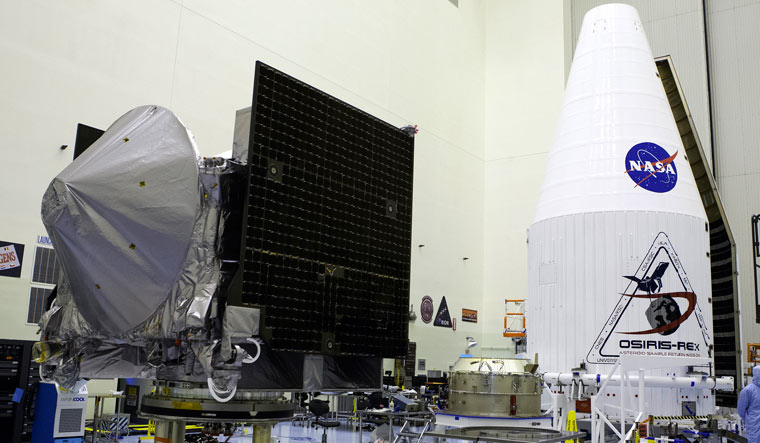NASA's OSIRIS-REx (Origins, Spectral Interpretation, Resource Identification, Security, Regolith Explorer) spacecraft has successfully executed a 620-metre flyover of Nightingale, a site located within a crater high in asteroid Bennu's northern hemisphere, the US space agency said. The study and sample-return mission, launched on 8 September 2016, is the first US mission to sample an asteroid, retrieve at least two ounces of surface material and return it to Earth for study. The spacecraft, built by Lockheed Martin Space Systems, flew past Earth on 22 September 2017, and reached the proximity of Bennu on 3 December 2018.
According to scientists from NASA's Goddard Space Flight Center in the US, the spacecraft left its 1.2-kilometre safe home orbit and flew an almost 11-hour transit over the asteroid, aiming its science instruments toward the 16-metre wide sample site before returning to its orbit.
OSIRIS-REx's primary goal in the Nightingale flyover was to collect the high-resolution imagery required to complete the spacecraft's Natural Feature Tracking image catalog, NASA said.
This catalogue, the agency said, will document the sample collection site's surface features like boulders and craters.
In August, when the spacecraft would collect samples from Nightingale, it would use this catalog to navigate with respect to Bennu's surface features, NASA noted in a statement.
Using the catalogue, the spacecraft would autonomously predict where on the sample site it will make contact.
In the recent flyby several of the spacecraft's other instruments also took observations of the Nightingale site -- including the OSIRIS-REx Thermal Emissions Spectrometer (OTES), the OSIRIS-REx Visual and InfraRed Spectrometer (OVIRS), the OSIRIS-REx Laser Altimeter (OLA), and the MapCam color imager, NASA noted.
Additionally, the space agency said, a similar flyover of the backup sample collection site, Osprey, is scheduled for February 11, with lower flybys performed later in spring for Nightingale, and in May for Osprey, according to the US space agency.
NASA added that the spacecraft will also perform the two flyovers at an altitude of 250 metres which will be the closest it has ever flown over asteroid Bennu's surface.
(With inputs from PTI)










